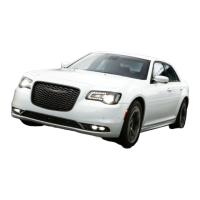
Do you have a question about the Chrysler 300 2022 and is the answer not in the manual?
| Brand | Chrysler |
|---|---|
| Model | 300 2022 |
| Category | Automobile |
| Language | English |
Information about your vehicle's key fob, including its functions and how to unlock doors.
Details on the Sentry Key Immobilizer system that prevents unauthorized vehicle operation by disabling the engine.
Explains the Keyless Enter 'n Go™ ignition feature and its operating modes (OFF, ACC, ON/RUN, START).
Instructions on how to use the remote start system to start the engine conveniently from outside the vehicle.
Information on how the Vehicle Security system monitors doors, hood, trunk, and ignition for unauthorized operation.
Covers manual and power door locks, including features like Passive Entry and automatic door locks.
Details on manual and power tilt/telescoping steering columns and heated steering wheel.
How to save and recall driver seat, mirror, and steering column positions using memory profiles.
Information on manual adjustment, power adjustment, heated seats, and ventilated seats.
Covers inside rearview mirror, illuminated vanity mirrors, and outside mirrors.
Operation of the headlight switch for headlights, parking lights, and instrument panel lights.
Controls for wipers, washers, and high/low beam headlights.
How Daytime Running Lights operate and can be controlled via Uconnect.
Instructions on how to switch between high and low beam headlights.
Details on the Automatic High Beam Headlamp Control system.
How to turn interior courtesy lights on and off.
Operation of front map and reading lights in the overhead console.
Illumination from the overhead console for improved visibility.
Instructions for operating windshield wipers at different speeds and settings.
How to use the windshield washer system.
Operation of the mist function for a single wipe cycle.
Explanation of automatic climate control features like MAX A/C, A/C, Recirculation, and Auto.
Details on interior storage compartments like the glove compartment.
Location and operation of the glove compartment.
Compartment for sunglasses located at the front of the console.
Information on connecting external USB devices and activating Android Auto™ or Apple CarPlay®.
Operation of the power sunshade for the rear windshield.
Controls for all door windows on the driver's door panel.
Details on Auto-Down and Auto-Up features with anti-pinch protection.
Operation and features of the panoramic sunroof.
Instructions on how to open the vehicle's hood.
Procedure for properly closing the vehicle's hood.
Methods for opening the trunk, including power release and key fob.
Information about the trunk mat used to protect the cargo area interior.
Location and use of grocery bag hooks in the rear cargo area.
Description of gauges like tachometer, speedometer, and temperature gauge.
Information on the interactive instrument cluster display and its features.
Details on the location and operation of instrument cluster display controls.
How to toggle between mph and km/h for the speedometer.
Submenu for vehicle information like tire pressure and oil life.
Status and visuals for Adaptive Cruise Control and LaneSense features.
Information on Trip A and Trip B, including distance, fuel economy, and elapsed time.
Displays audio information of the currently playing source.
Shows stored warning messages.
Allows changing displayed information and its location in the instrument cluster.
How to view or change instrument cluster display settings.
Explanation of warning/indicator lights and messages in the instrument panel.
Indicates a fault with the air bag system.
Monitors brake functions like fluid level and parking brake application.
Indicates ACC is not operating and requires service.
Monitors the ABS system and indicates if it's not functioning.
Indicates that the ESC system is turned off.
Illuminates when LaneSense is not operating and requires service.
Provides visual and steering torque warnings for lane departure.
Illuminates when the fuel level reaches approximately 1.9 gal.
Indicates when the windshield washer fluid is low.
Part of OBD II system; monitors engine and transmission control systems.
Displays ACC system distance setting when engaged.
Displays when ACC is set and a vehicle is detected ahead.
Illuminates when cruise control is set to the desired speed.
Illuminates when the front fog lights are on.
Indicates ACC is turned on but not set.
Illuminates when cruise control is ready but not set.
Indicates that the high beam headlights are on.
Information about accessing vehicle emissions control performance data.
Procedure for starting the vehicle engine.
Details on operating the ignition switch with a push button.
Steps to turn on the engine using the ENGINE START/STOP button.
Procedure for starting the engine if it fails to start.
Describes idle speed control and engine warming.
Information on the engine block heater for cold weather starting.
Guidelines for breaking in the drivetrain components of a new vehicle.
How the BTSI system holds the transmission gear selector in PARK unless brakes are applied.
Details on controlling the transmission using the rotary electronic gear selector.
Provides PARK, REVERSE, NEUTRAL, DRIVE, and SPORT shift positions with manual shifts.
Guidelines for selecting gear ranges and avoiding accelerator use when shifting.
How PARK supplements the parking brake by locking the transmission.
Alters automatic shift schedule for sportier driving.
Used for engine braking when descending steep grades.
Electronic monitoring for abnormal transmission conditions.
How to engage and use AutoStick for manual shift control.
Improves fuel economy by shutting off four engine cylinders during light load.
Provides increased vehicle response and maneuverability.
Keeps vehicle at a constant preset speed.
How ACC buttons on the steering wheel operate the system.
How ACC brings the vehicle to a standstill and resumes motion.
Location and detection range of ParkSense sensors.
Visual and audible indications of obstacle distance.
How the LaneSense system detects lane markings and vehicle position.
How to activate or deactivate the LaneSense system.
Steps to manually turn the Rear View Camera system on.
Instructions for emergency refueling using a gas can and funnel.
Information on the label for passenger and luggage loading capacity.
Total allowable weight of the vehicle including driver, passengers, and cargo.
Maximum capacity of the front and rear axles.
Consequences of overloading the vehicle's load carrying components.
Definitions for trailer towing terms like GVWR and GTW.
Chart for maximum trailer weight ratings based on engine and transmission.
Recommendations for trailer brake systems.
Requirements for trailer stop lights, turn signals, and wiring.
Information about the Uconnect system and its owner's manual supplement.
Reducing risk of unauthorized access to vehicle systems and wireless communications.
Accessing and changing programmable features within the Uconnect system.
Options for touchscreen theme, brightness, and color.
Options for setting the vehicle's internal clock and time format.
Adds a delay to the ParkView Backup Camera when shifting out of REVERSE.
Turns the Active ParkView Backup Camera Guidelines on or off.
Changes the distance at which the Forward Collision Warning alert sounds.
Turns the Forward Collision Warning system on or off.
Activates Forward Collision Warning Active Braking.
Adjusts the volume of the Front ParkSense system alerts.
Adjusts the volume of the Rear ParkSense system alerts.
Changes the type of alert for detected objects in blind spots.
Adjusts power steering modes (Normal, Sport, Comfort).
Turns the Hill Start Assist system on or off.
Turns the Rain Sensing Auto Wipers on or off.
Tilts mirrors when the vehicle is placed in REVERSE.
Tilts mirrors in REVERSE. Setting options are On and Off.
Turns the Rain Sensing Auto Wipers on or off.
Turns headlights on when wipers are activated. Options are On and Off.
Options for exterior and interior lights, including headlight off delay.
Unlocks doors when any door is opened from the inside.
Turns on or off light flashing when Lock button is pushed.
Sounds horn when Lock button is pushed on key fob.
Activates comfort systems when remote start or ignition is started.
Adjusts seats to make exiting the vehicle easier.
Keeps electrical features running after engine is off.
Sets time for headlights to shut off after vehicle is turned off.
Adjusts audio levels from specific speakers.
Adjusts Bass, Mid, and Treble ranges of the audio.
Adjusts audio volume as speeds increase.
Turns the Surround Sound system on or off.
Tunes audio levels from a device connected through the AUX port.
Automatically begins playing audio from a connected device.
Activates phone message pop-ups in the Instrument Cluster Display.
Opens the Do Not Disturb settings menu.
Shows the list of paired phones and audio devices.
Activates smartphone projection onto the vehicle's touchscreen.
Plays the current song from the beginning when tuning to a music channel.
Sets channels to skip, displaying a list of skipped channels.
Provides SiriusXM® subscription information.
Displays radio system information.
US/CANADA exposure to radio frequency radiation.
Details on safety features like Anti-Lock Brake System (ABS).
How ABS provides stability and brake performance.
Indicates if the brake system is not functioning properly.
Optimizes braking capability during emergency maneuvers.
Manages brake torque distribution between front and rear axles.
Enhances directional control and stability.
Normal operating mode for ESC, used for most driving conditions.
Mode useful if vehicle becomes stuck, allowing more wheel spin.
How to turn the Hill Start Assist feature on or off.
HSA provides assistance to mitigate roll back while towing a trailer.
Improves braking performance in wet conditions by removing water from rotors.
Detects vehicles in blind spot zones using radar sensors.
Monitors rear detection zones for moving objects.
Three selectable modes for Blind Spot operation available via Uconnect.
FCW Sensitivity and Active Braking settings programmable via Uconnect.
Indicates a system fault detected by the TPMS.
Information on vehicle restraint systems: seat belts, airbags, and child restraints.
Proper use of restraint systems to ensure occupant safety.
How to properly wear and adjust lap/shoulder belts.
Information on using a seat belt extender when needed.
Safety guidelines for pregnant women using seat belts.
List of components within the Air Bag System.
Used to secure child restraint systems.
Details on multistage front air bag system features.
How Side Air Bags and pretensioners activate in rollover events.
Procedures for maintaining the vehicle's air bag system.
Purpose of EDR to record crash data for system understanding.
Recommendations for children riding rear-facing until age two or weight/height limit.
Guidelines for forward-facing child seats and booster seats.
Vehicle anchor points for installing LATCH-equipped child seats.
Notes on using the center seat LATCH or seat belt.
How seat belts are used to secure child restraints.
Locations of ALR retractors used to keep seat belts tight.
Never transport passengers in the cargo area.
How to safely transport pets in the vehicle.
Inspect seat belt system periodically for damage.
Guidelines for using vehicle floor mats safely.
Inspect tires for wear, objects, cracks, and inflation pressure.
Check brake lights and exterior lights operation.
Check for proper closing, latching, and locking.
Check for fuel, coolant, oil, or other fluid leaks.
Safety tips to avoid carbon monoxide exposure.
How to use hazard warning flashers to alert other motorists.
Connects to support centers like Roadside Assistance and Uconnect Customer Care.
Warnings and instructions for changing a tire.
Critical locations for proper jacking of the vehicle.
Location of remote battery posts for jump starting.
Location of the remote positive battery post.
Location of the remote negative battery post.
Steps for refueling using a funnel for a cap-less fuel system.
Steps to reset the manual park release lever.
How to move the vehicle if stuck in mud, sand, or snow using a rocking motion.
Towing recommendations for AWD vehicles.
Towing recommendations for RWD vehicles.
Description of the Enhanced Accident Response System.
Purpose of the EDR to record data in crash situations.
Information on the automatic oil change indicator system and maintenance reminders.
Identification of components in the 3.6L engine compartment.
Identification of components in the 5.7L engine compartment.
Information on the maintenance-free battery and its location.
Information on authorized dealer service and service manuals.
Details on engine oil selection for 3.6L and 5.7L engines.
Recommendations for servicing the air conditioner system.
Information on R-1234yf refrigerant for the air conditioning system.
Location and replacement of the cabin air filter.
Instructions for removing and installing windshield wiper blades.
How to check engine coolant level and condition.
Procedure for draining, flushing, and refilling the cooling system.
Recommendations for choosing engine coolant (antifreeze).
Notes regarding coolant level checks and vapor from the engine.
Ensuring brake system performance through component inspection.
Checking the brake fluid level in the master cylinder.
Manufacturer's recommendation against using transmission additives.
Checking transmission fluid level and when to have it checked.
Importance of using proper transmission fluid for performance and life.
Inspection of AWD system components for fluid leaks.
Periodic fluid level checks for the rear axle.
General information on fuses and their function.
Fuse cavity location and descriptions printed on power distribution center cover.
Bulb descriptions and replacement part numbers for interior bulbs.
Instructions for replacing HID headlamp bulbs; service by dealer recommended.
Steps to replace bi-halogen low and high beam headlamp bulbs.
The license lamp uses an LED source, must be replaced as an assembly.
The CHMSL lamp uses LED sources, must be replaced as an assembly.
Covers tire markings, identification numbers, terminology, pressures, and loading.
Covers tire markings, identification, terminology, pressures, and loading.
Vehicle maximum load on tire must not exceed capacity.
Four primary areas affected by improper tire pressure: Safety, Fuel Economy, Tread Wear, Ride Comfort.
Proper tire inflation contributes to a comfortable ride and stability.
Proper cold tire inflation pressure is listed on the driver's side B-pillar.
Warning about combining radial ply tires with other types.
Criteria for repairing a damaged tire.
Indicators in tire grooves to determine when tires need replacement.
Factors affecting tire service life, including driving style and pressure.
Information about the full size spare tire for temporary emergency use.
Information about the limited use spare tire for temporary emergency use.
Comparative rating based on tire wear rate.
Grades representing tire's ability to stop on wet pavement.
Tire's resistance to heat generation and dissipation.
Recommendations for protecting the vehicle body.
Factors affecting vehicle body care like chemicals and contaminants.
Guidelines for cleaning headlights and maintaining bodywork.
Procedures for cleaning plastic headlights and fog lights.
Cleaning instructions for interior surfaces.
Cleaning fabric upholstery and carpeting.
How to clean seat belts and precautions for their use.
How to clean instrument cluster lenses without scratching.
Recommendations for preserving and cleaning leather upholstery.
Guidelines for cleaning glass surfaces like mirrors and defrosters.
Location of the VIN and legal restrictions on its removal.
Information on the dual hydraulic brake systems and loss of power assist.
Proper lug nut/bolt torque for wheel mounting.
Information on required octane number and potential engine issues.
Recommendations for using gasolines with detergents and additives.
Information on blends with oxygenates like ethanol.
Compatibility of Non-Flex Fuel Vehicles with E-85 fuel.
Potential damage from modifying the engine for CNG or LP fuel.
Guidelines for maintaining vehicle performance and avoiding fuel system damage.
Tips for preparing for service appointments and communicating with dealers.
Contact information for FCA US LLC's customer assistance center.
How to report vehicle safety defects to NHTSA and FCA US LLC.
Information on ordering comprehensive service manuals.
Manuals filled with diagrams for troubleshooting vehicle systems.
Manuals prepared with assistance of service and engineering specialists.
Regulatory statement for RF devices and FCC compliance.
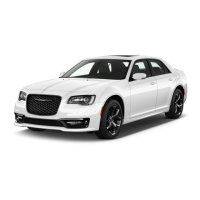

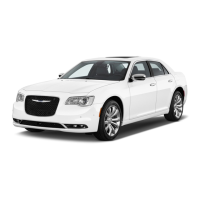

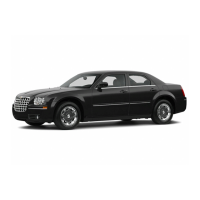
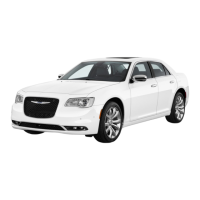


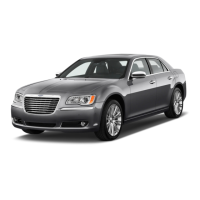
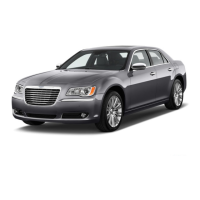

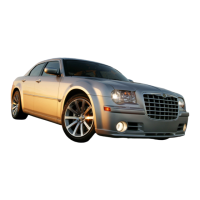
